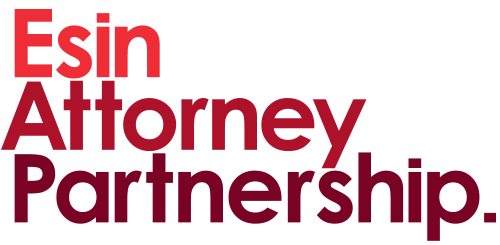Recent Development
We shared the draft Communiqué on Noteholders Meeting which the Capital Markets Board of Turkey (“CMB“) made available for public in our Client Alert dated April 30, 2020.
The draft communiqué prepared by the CMB was revised in accordance with the amendments to the Capital Markets Law No. 6362 (“CML”) and the market actors’ comments. The new Communiqué on Noteholders Meeting (“Communiqué“) entered into force upon its publication in the Official Gazette No. 31241 dated September 11, 2020.
The Communiqué introduces rules and procedures regarding the structure of the noteholders’ meeting, the representative of the noteholders, the noteholders’ meetings procedure, and the measures that can be taken in the event of the issuer’s default.
What Does the Communiqué Say?
• Tranche Noteholders’ Meeting: Meetings to make changes to the interest, maturity, principal and other main terms and conditions set out in the debt instrument’s prospectus or issuance certificate or identified through the Central Registry Agency (“CRA“) will be named tranche noteholders’ meeting (“Tranche Noteholders’ Meeting“).
The Tranche Noteholders’ Meeting may be convened by the issuer’s board of directors or the relevant tranche’s noteholders. The Tranche Noteholders’ Meeting’s decision quorum will be a minimum of two-thirds of the nominal value of the related tranche, unless a higher quorum has been set out in the prospectus or the issuance certificate.
The decisions of the Tranche Noteholders’ Meeting will only be valid if they are approved by the issuer’s board of directors within three working days following the date of the meeting.
As a principle, all decisions of the Tranche Noteholders’ Meeting complying with the above conditions will be binding upon all noteholders of the relevant tranche, even those who oppose the decisions or who do not participate in the meeting when duly invited.
• General Noteholders’ Meeting: Noteholders that are not parties to the relevant tranche but who think that a decision of the Tranche Noteholders’ Meeting that was approved by the issuer’s board of directors violate their rights can request a general noteholders’ meeting (“General Noteholders’ Meeting“) in five working days following the approval (by the issuer’s board of directors) of the relevant decision, if they possess 20% of the nominal value of all of the issuer’s other tranches of the notes that are in circulation.
The issuer’s board of directors will convene the General Noteholders’ Meeting upon this request. The decisions of the Tranche Noteholders’ Meeting will become final if the General Noteholders’ Meeting is not requested within the allotted five days.
Moreover, the General Noteholders’ Meeting must be held within 15 working days following the board approval of the Tranche Noteholders’ Meeting’s decision. The Tranche Noteholders’ Meeting’s decision will become final if the General Noteholders’ Meeting is not held when duly convened by the issuer’s board of directors within this period.
The General Noteholders’ Meeting will take its decisions with a minimum two-thirds of the nominal value of the relevant debt instruments. If this majority is met, the Tranche Noteholders’ Meeting decision under discussion will not enter into force.
• Secured debt instruments: Debt instrument holders whose instruments are backed with a security will form a separate Tranche Noteholders’ Meeting wherein they can take decisions regarding these instruments.
As a rule, these persons will not be able to attend the General Noteholders’ Meetings. However, they will be able to attend the meetings for the unsecured part of the amount they are owed in case they are not fully secured. In addition, they will also be able to attend meetings if the creation of a new security interest for different tranches negatively affects their existing security interests.
• Noteholders’ Meeting Procedure: Noteholders’ meetings will primarily be held physically. However, the noteholders’ meetings will also be able to take valid decisions through electronic or physical circulation of its resolution, which will have to be signed by the noteholders or their proxies.
Public companies listed on the stock exchange and issuers that have offered their securities to the public will also have to provide the necessary means for electronic participation to the noteholders’ meeting. Other issuers will also be able to convene the meetings electronically, even if their articles do not provide for electronic convention.
Noteholders will be able to elect or dismiss a representative for each tranche by reaching a total of votes representing more than half of the nominal value of the relevant tranche. The representative can be a real or a legal person and can also be named in the prospectus or the issuance certificate. If there is a conflict of interest between the issuer and the debt instrument holders, the representative will protect the rights of noteholders in accordance with the equal treatment principle. The rules applicable to the fees and expenses of the representative will be set out in the prospectus or the issuance certificate.
Debt instruments owned by the issuers or their related parties do not grant the issuer the right to vote in noteholders’ meetings.
• Issuer’s default: All obligations arising from the debt instrument and the events of default in relation to the instrument will be explicitly defined in the prospectus or the issuance certificate. If the terms and conditions of the debt instrument are restructured due to the issuer’s default, all enforcement proceedings initiated for the debt instrument and all interim injunctions will be automatically suspended as of the restructuring date.
• Debt instruments that are issued outside of Turkey: The Communiqué will not apply to debt instruments issued outside of Turkey.
Conclusion
The Communiqué puts flesh on the bones of the principles and procedures of the noteholders’ meeting regulated under the CML. This new forum will allow investors to act in a coordinated manner when negotiating with the issuers.



